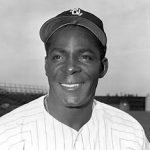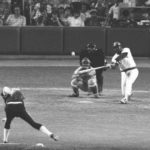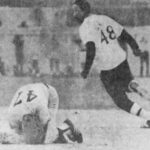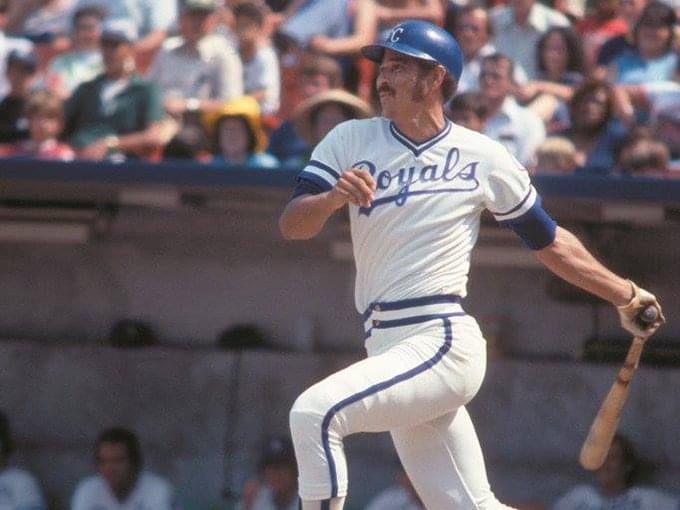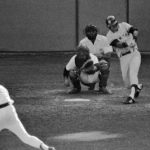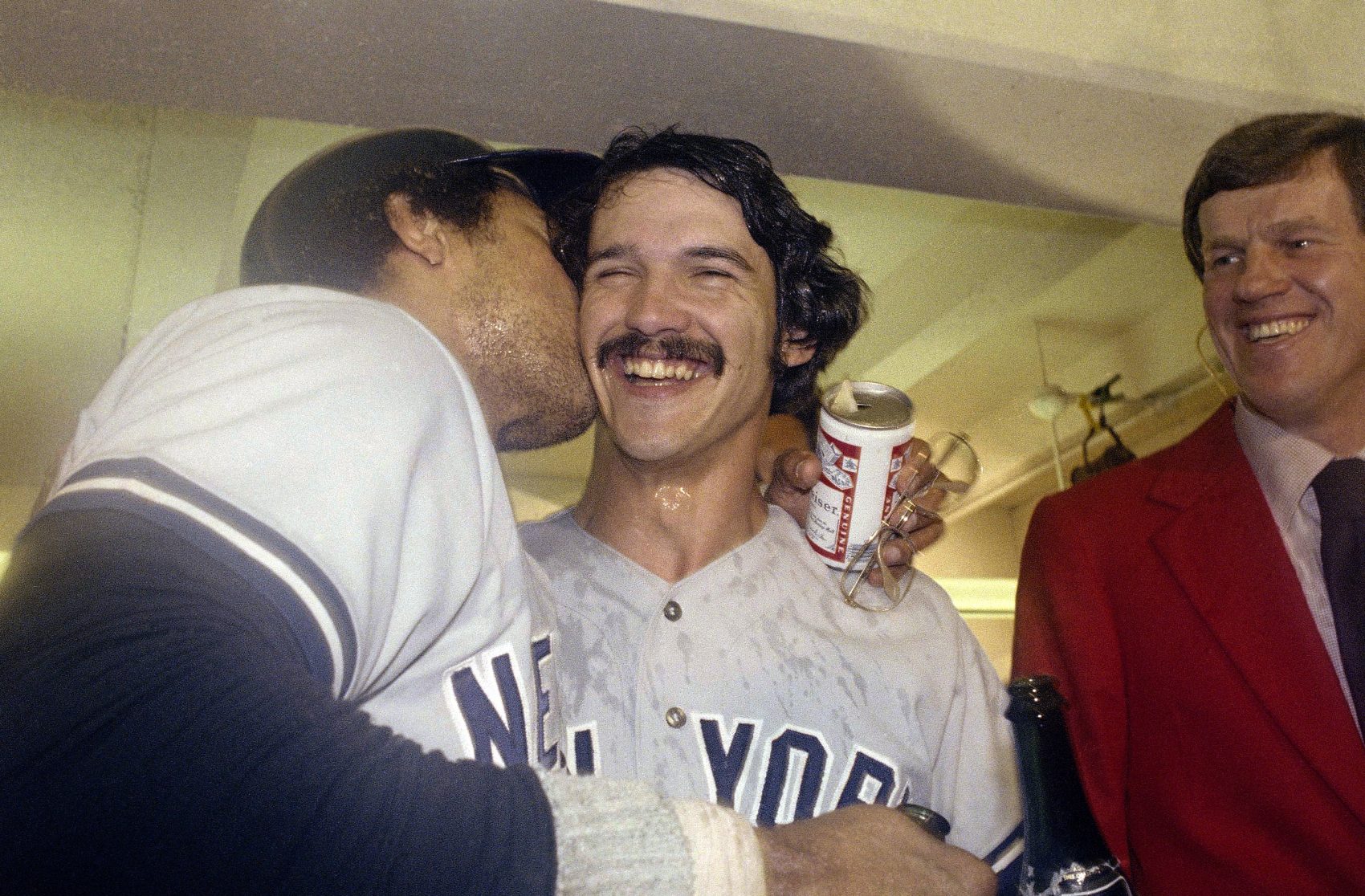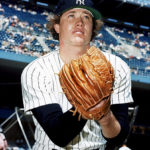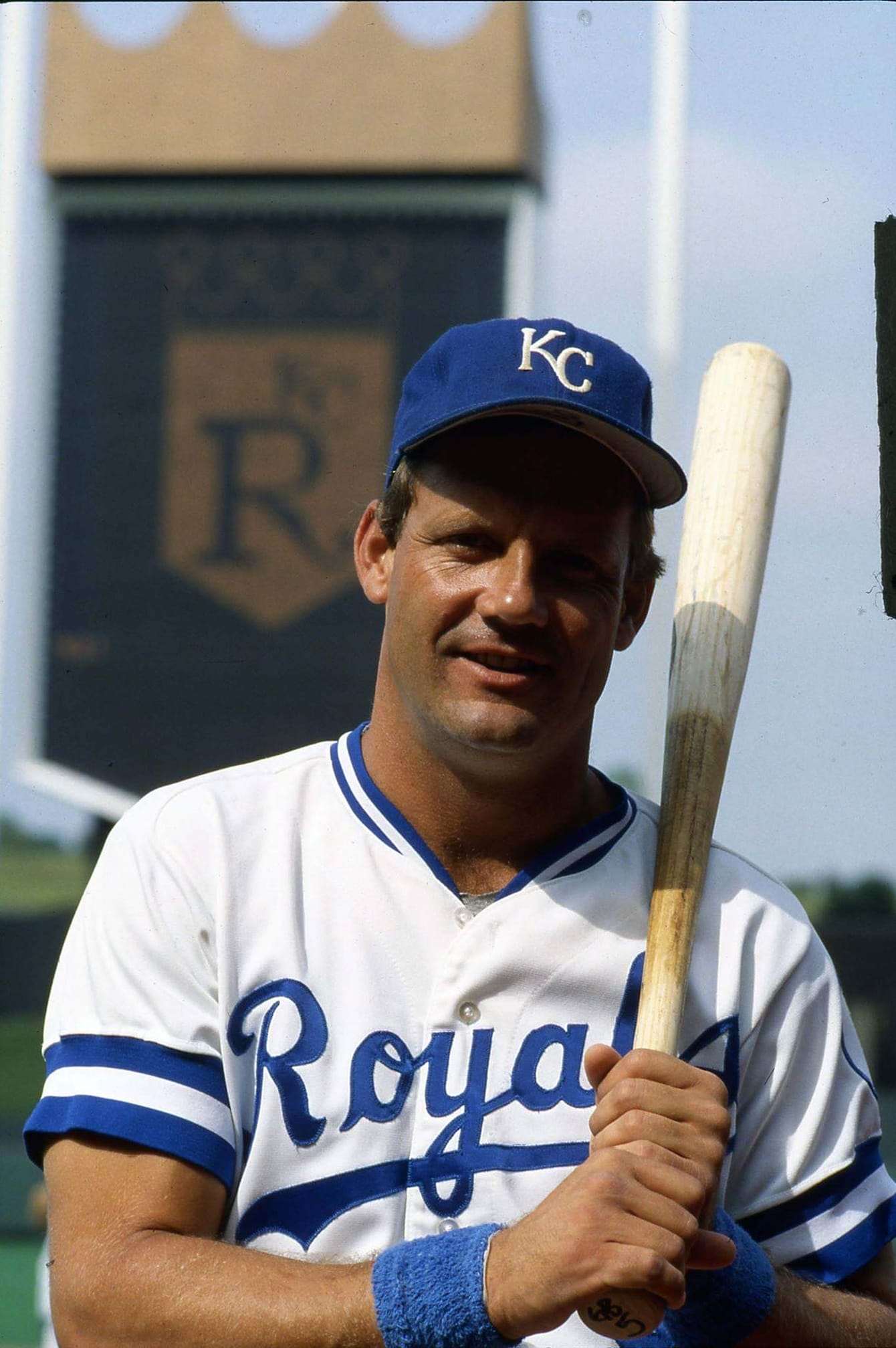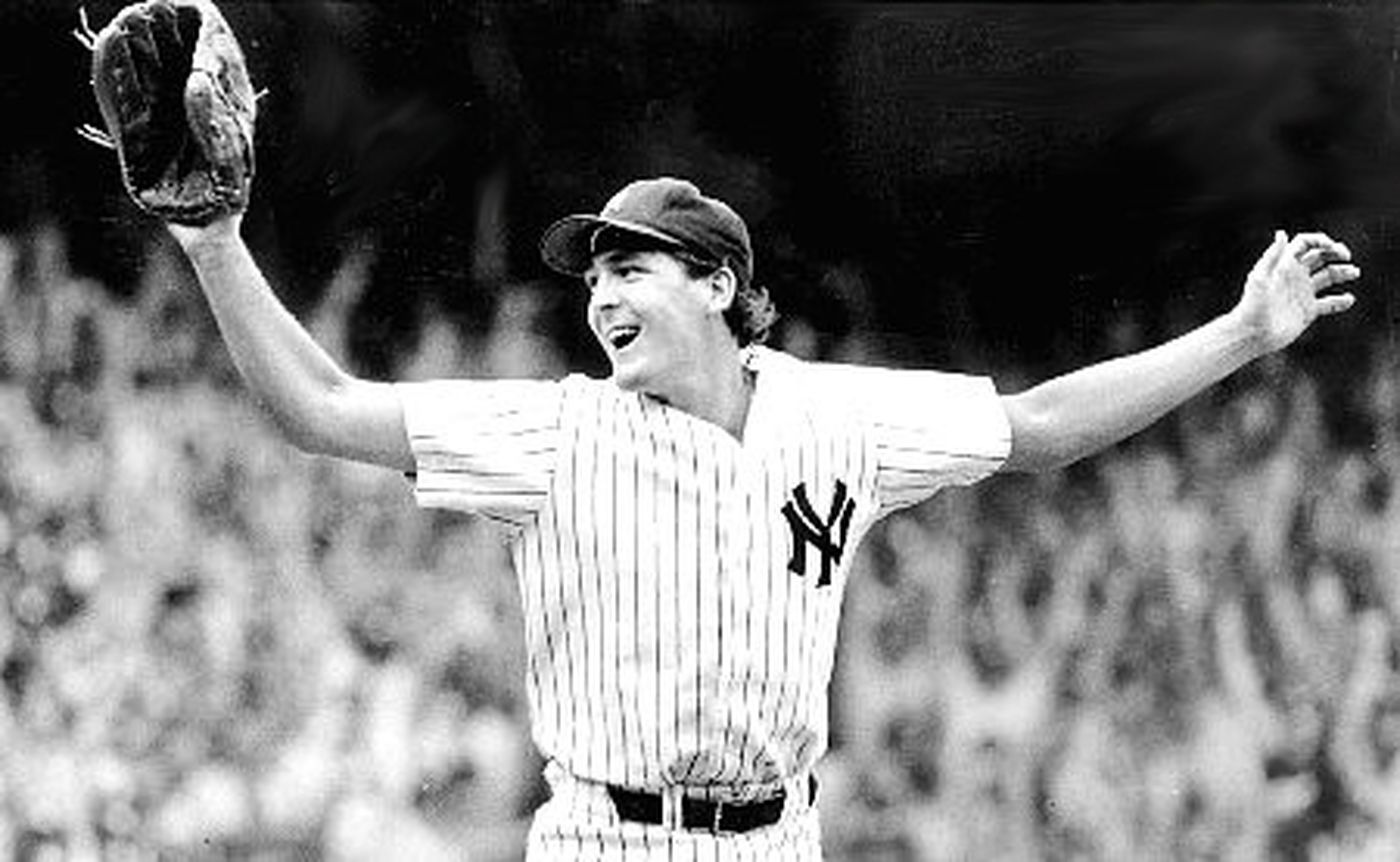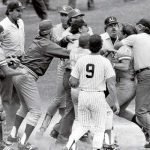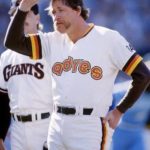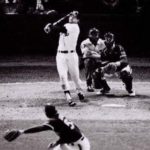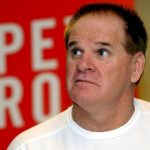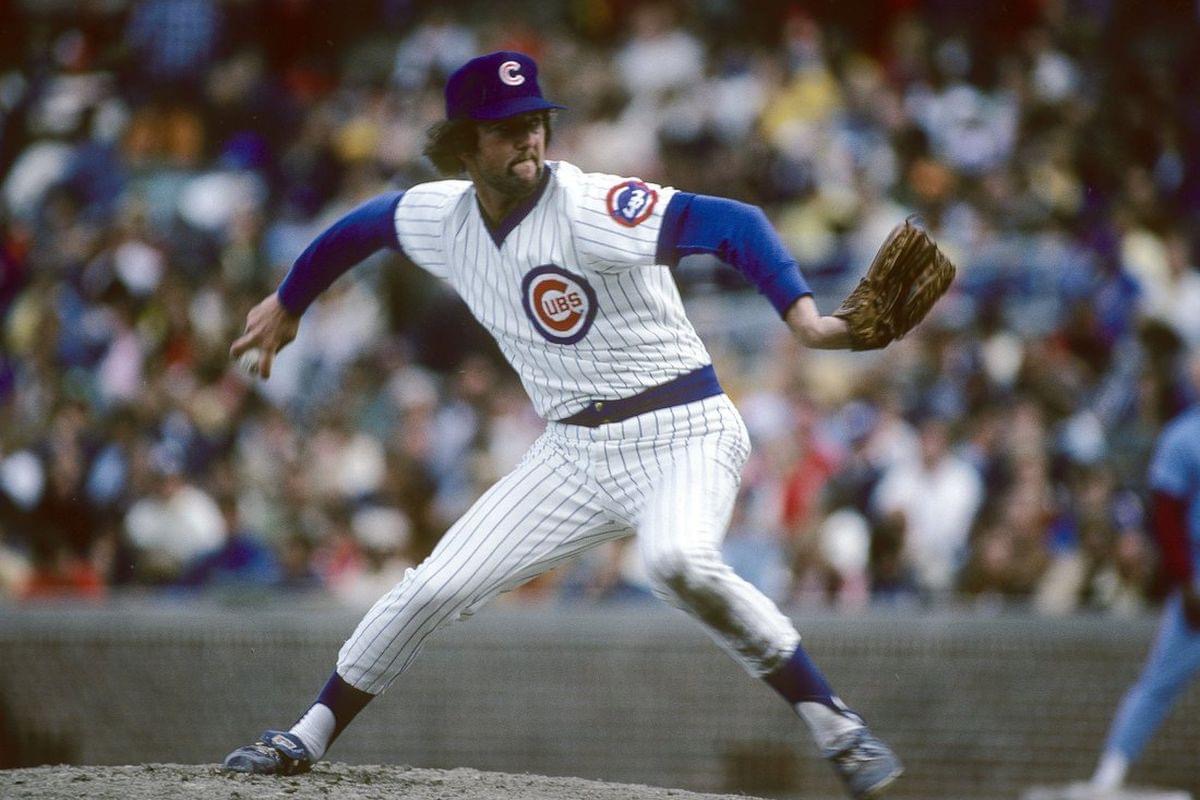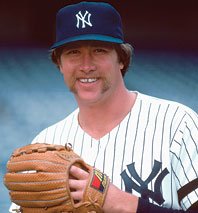Rich Gossage Stats & Facts
Rich Gossage
Position: Pitcher
Bats: Right • Throws: Right
6-3, 180lb (190cm, 81kg)
Born: July 5, 1951 in Colorado Springs, CO
Draft: Drafted by the Chicago White Sox in the 9th round of the 1970 MLB June Amateur Draft from Wasson HS (Colorado Springs, CO).
High School: Wasson HS (Colorado Springs, CO)
School: Colorado State University-Pueblo (Pueblo, CO)
Debut: April 16, 1972 (10,823rd in MLB history)
vs. KCR 1.0 IP, 0 H, 0 SO, 1 BB, 0 ER
Last Game: August 8, 1994
vs. TEX 3.0 IP, 0 H, 1 SO, 0 BB, 0 ER, Sv
Hall of Fame: Inducted as Player in 2008. (Voted by BBWAA on 466/543 ballots)
View Rich Gossage’s Page at the Baseball Hall of Fame (plaque, photos, videos).
Rookie Status: Exceeded rookie limits during 1972 season
Agents: Jerry Kapstein
Full Name: Richard Michael Gossage
Nicknames: Goose
View Player Bio from the SABR BioProject
Nine Players Who Debuted in 1972
Dwight Evans
Buddy Bell
Mike Schmidt
Bob Boone
Gary Matthews
Davey Lopes
Goose Gossage
Rick Reuschel
Garry Maddox
The Rich Gossage Teammate Team
C: Thurman Munson
1B: Dick Allen
2B: Ryne Sandberg
3B: Graig Nettles
SS: Alex Rodriguez
LF: Rickey Henderson
CF: Mickey Rivers
RF: Tony Gwynn
DH: Reggie Jackson
SP: Ron Guidry
SP: Tommy John
SP: Nolan Ryan
SP: Jerry Reuss
SP: Dave Stewart
RP: Kent Tekulve
RP: Sparky Lyle
M: Billy Martin
Vintage Baseball HOT ON EBAY
Card Collections ENDING SOON ON EBAY
MOST WANTED ROOKIE CARDS
VINTAGE SPORTS TICKETS
Baseball Hall of Famers
Notable Events and Chronology for Goose Gossage Career
With his mean-looking scowl, unorthodox delivery, and a fastball that frequently approached 100 miles per hour, Rich “Goose” Gossage was the most intimidating relief pitcher of his time. Adding to Gossage’s mound presence were his size and willingness to pitch inside to opposing batters. One of the pioneers of the closer role that has become such an intricate part of the game over the past three decades, the 6’3″, 220-pound reliever differed from his successors in that he frequently earned saves by entering games as early as the seventh inning.
Born in Colorado Springs, Colorado on July 5, 1951, Richard Michael Gossage received his introduction to baseball watching Dizzy Dean and Pee Wee Reese on the Game of the Week with his family and friends. A huge fan of Mickey Mantle as a youngster, Gossage very much considered his hero to be a fictitious character who didn’t even exist. As a result, he never gave serious thought to eventually becoming a major league player himself.
In spite of his earlier reticence over pursuing a career in baseball, Gossage began to consider it a viable option when the Chicago White Sox selected him in the ninth round of the 1970 amateur draft. After spending less than two years in the minor leagues, Gossage made his major league debut with the team as a 20-year-old on April 16, 1972. Pitching almost exclusively in relief, he had a solid rookie year, compiling a record of
7-1, with a 4.28 ERA in 80 innings of work. However, the youngster struggled in each of the next two seasons, going a combined 4-10, with only one save, while posting earned run averages of 7.43 and 4.13, respectively. Gossage’s lack of success resulted mostly from his lack of control, since he certainly threw hard enough to get out opposing batters.
Over the course of those two seasons, he walked a total of 84 men in only 139 innings of work. Furthermore, Gossage had yet to learn how to effectively change speeds on his pitches, instead relying solely on his fastball to overpower the opposition.
In 1975, though, White Sox pitching coach Johnny Sain helped Gossage develop a slurve, which was a combination slider/curve. The new pitch made the reliever’s fastball even more effective, enabling Gossage to have his first truly dominant season. In addition to saving a league-leading 26 games for Chicago, the reliever won another nine, compiled a 1.84 ERA, allowed only 99 hits and struck out 130 batters in 142 innings of work, and made the All-Star Team for the first time in his career. Yet, strapped for starting pitching, the White Sox decided to convert Gossage into a starter the following year. In his only year in that role, the big righthander went 9-17, with a 3.94 ERA and 15 complete games.
At the end of the 1976 season, the White Sox traded Gossage to the Pittsburgh Pirates for slugging outfielder Richie Zisk. The first thing the Pirates did was put Gossage back in the bullpen where he belonged – a place he remained the rest of his career. Goose responded by saving 26 games, winning another 11, compiling a brilliant 1.62 ERA, allowing only 78 hits in 133 innings of work, and striking out 151 batters. When Gossage became a free agent at the end of the year, he signed a six-year contract with the Yankees to become their new closer.
The first several weeks of the 1978 campaign did not go smoothly for New York’s latest high-priced superstar. Gossage got off to a slow start, blowing several save opportunities early in the season. The reliever’s early-season woes stemmed partly from the pressure he felt from wanting to earn the trust of his new teammates and the fans of New York. However, he also felt burdened by trying to replace as closer the previous year’s Cy Young Award winner, Sparky Lyle, who had been relegated to set-up man duties in the Yankee bullpen. Furthermore, Gossage drew the ire of Billy Martin in spring training when he refused to comply with the Yankee manager’s directive to hit an opposing player in the head with a pitch. The volatile Martin did not care much for outfielder Billy Sample, who he earlier managed in Texas. Gossage later revealed that Martin approached him during an exhibition game and told him to “…drill that bleepin’ Sample in the bleepin’ head”. Fearing he might kill Sample, Gossage declined to do so, thereby doing irreparable damage to his relationship with Martin.
Despite Martin’s lack of fondness for Gossage, the Yankee manager found himself relying heavily on his ace reliever after he righted himself during the season’s second month. Gossage ended up having an outstanding year for New York, finishing the campaign with a league-leading 27 saves, posting 10 victories of his own, compiling an ERA of 2.01, striking out 122 batters in 134 innings, and allowing just 87 hits, en route to earning a spot on the All-Star Team and being named the A.L. Rolaids Reliever of the Year. Gossage also had an excellent postseason, helping the Yankees win their second straight world championship by saving the one-game playoff victory over the Boston Red Sox, before going 1-0 and pitching six scoreless innings against the Dodgers in the World Series.
A clubhouse scuffle with teammate Cliff Johnson less than two weeks into the 1979 season resulted in Gossage injuring his pitching hand. He subsequently found himself unable to pitch the remainder of the year. However, Gossage returned in 1980 to have one of his finest seasons. He finished the campaign with a record of 6-2, a 2.27 ERA, and a league-leading 33 saves, and he allowed only 74 hits in 99 innings of work, while striking out 103. His outstanding year earned him a third-place finish in the league MVP voting. Still, Gossage’s brilliant regular-season performance was overshadowed by the three-run home run he surrendered to George Brett in Game Three of the ALCS that all but eliminated the Yankees from the playoffs.
As good as Gossage was in 1980, he may have been even better the following year. The reliever was practically unhittable during 1981’s split season, compiling a 0.77 ERA and a record of 3-2 with 20 saves, while allowing only 22 hits in 47 innings of work. He was just as impressive in the postseason, saving all three wins versus the Brewers in the ALDS, picking up a save against the A’s in the ALCS, and saving the Yankees’ only two victories in the World Series against the Dodgers. During the postseason, Gossage allowed no runs and just six hits, while striking out 15 men, in 14 1/3 innings of work.
Goose had two more outstanding seasons in New York before he decided to leave for San Diego. In 1982, he finished second in the American League with 30 saves, earning in the process his fourth and final All-Star nomination as a member of the Yankees. In his final season in pinstripes, he finished 13-5 with 22 saves and a 2.27 ERA. Despite the success he experienced with the Yankees, Gossage decided to leave New York at the end of the year since he had grown weary of pitching in the Bronx Zoo – a phrase that was coined to describe life at Yankee Stadium at the time. Instead of returning to New York when his contract expired at the end of the 1983 campaign, he elected to sign on as a free agent with the San Diego Padres.
In his first season in San Diego, Gossage helped the Padres to the National League pennant, finishing 10-6 with 25 saves. He had three more productive years in San Diego, winning a total of 15 games and saving 58 others, before moving on to the Chicago Cubs for one year, then on to the Giants, back to the Yankees briefly, and then on to Texas, Oakland, and Seattle before finally retiring at the end of the 1994 season. Gossage ended his career with 310 saves, and his 115 wins place him third on the all-time list for relief pitchers, behind only Hoyt Wilhelm and Lindy McDaniel. He was a nine-time All-Star, led his league in saves three times, and finished second two other times.
When Gossage left the game, he did so with the admiration and respect of all those who played with and against him. Former Yankee teammate Ron Guidry confided, “I had guys tell me ‘We would much prefer hitting off of you than hitting off of him, not because it’s any easier, but you don’t scare us as much.'”
Guidry also spoke of Gossage’s mean streak: “Gossage would just as soon hit you upside the head as give you the time of day.”
Jamie Quirk spoke of how intimidating it was to face Gossage on the mound: “I faced Goose many, many times and – very intimidating guy…very intimidating. But that’s what he wanted. That’s what got him the edge over the hitter.”
Paul Molitor discussed how righthanded hitters, in particular, had a difficult time picking up the ball against Gossage: “He had that delivery where he hid, and you saw knees, and you saw elbows, and he hid the ball. Then, all of a sudden, out of nowhere, came this 98 mph fastball with movement.”
Dave Winfield, who played with Gossage in New York for three years, discussed the degree to which his former teammate instilled fear in opposing batters: “When you saw him work up into a frenzy and a foam in the bullpen – he’d come out sweatin’ and snortin’ and slinging that baseball – the manager’s looking for someone, “Where’s my pinch-hitter?’ and guys are drinking water, and they’re going to the bathroom. They don’t want any part of Goose.”
Steve Balboni, who played with Gossage on the Yankees and also faced him as a member of the Kansas City Royals, said, “He was the first guy that I know that was just overpowering. When he was on, he was almost unhittable.”
The reluctance of the members of the BBWAA to admit relief pitchers to the Baseball Hall of Fame kept Gossage out of Cooperstown for several years. But he finally received the necessary 75% vote to gain induction in 2008, in his ninth year of eligibility. @ET-DC@eyJkeW5hbWljIjp0cnVlLCJjb250ZW50IjoicG9zdF90YWdzIiwic2V0dGluZ3MiOnsiYmVmb3JlIjoiTGVhcm4gTW9yZSBhYm91dCB0aGUgdGVhbXMsIHBsYXllcnMsIGJhbGwgcGFya3MgYW5kIGV2ZW50cyB0aGF0IGhhcHBlbmVkIG9uIHRoaXMgZGF0ZSBpbiBoaXN0b3J5IC0gLSAtIC0gLSAtIC0gIiwiYWZ0ZXIiOiIiLCJsaW5rX3RvX3Rlcm1fcGFnZSI6Im9uIiwic2VwYXJhdG9yIjoiIHwgIiwiY2F0ZWdvcnlfdHlwZSI6InBvc3RfdGFnIn19@
Vintage Baseball HOT ON EBAY
Card Collections ENDING SOON ON EBAY
MOST WANTED ROOKIE CARDS
VINTAGE SPORTS TICKETS
Baseball Hall of Famers
Factoids, Quotes, Milestones and Odd Facts
Played For
Chicago White Sox (1972-1976)
Pittsburgh Pirates (1977)
New York Yankees (1978-1983)
San Diego Padres (1984-1987)
Chicago Cubs (1988)
San Francisco Giants (1989)
New York Yankees (1989)
Texas Rangers (1991)
Oakland Athletics (1992-1993)
Seattle Mariners (1994)
Similar: Dick Radatz… Troy Percival had a similar delivery.
Linked: Kirk Gibson hit a clutch, three-run homer off Gossage in the eighth inning in Game Five of the 1984 World Series. Gossage had convinced Dick Williams that he could strike out Gibson, against whom he had good success previously… In 1983, George Brett hit a monstrous homer off Gossage, which was later ruled out because of excessive pine tar on his bat. Eventually, the homer was allowed in what became known as the Pine Tar Game… Bruce Sutter
Best Season, 1978
He fanned 122 batters in 134 1/3 IP, and worked more than two innings per outing. In the World Series against the Dodgers, he allowed one hit and zero runs in six innings out of the pen. He had two very good seasons before he went to the Yanks, with the White Sox in 1975, and the Bucs in 1977. With the Yanks, he was essentially the best reliever in the AL for six seasons.
Awards and Honors
1978 AL Rolaids Relief
Post-Season Appearances
1978 American League Championship Series
1978 World Series
1980 American League Championship Series
1981 American League Division Playoffs
1981 American League Championship Series
1981 World Series
1984 National League Championship Series
1984 World Series
Transactions
June 4, 1970: Drafted by the Chicago White Sox in the 9th round of the 1970 amateur draft; December 10, 1976: Traded by the Chicago White Sox with Terry Forster to the Pittsburgh Pirates for Richie Zisk and Silvio Martinez; October 28, 1977: Granted Free Agency; November 22, 1977: Signed as a Free Agent with the New York Yankees; November 7, 1983: Granted Free Agency; January 6, 1984: Signed as a Free Agent with the San Diego Padres; February 12, 1988: Traded by the San Diego Padres with Ray Hayward to the Chicago Cubs for Keith Moreland and Mike Brumley; March 28, 1989: Released by the Chicago Cubs; April 14, 1989: Signed as a Free Agent with the San Francisco Giants; August 10, 1989: Selected off waivers by the New York Yankees from the San Francisco Giants; November 13, 1989: Granted Free Agency; January 25, 1991: Signed as a Free Agent with the Texas Rangers; October 30, 1991: Granted Free Agency; January 27, 1992: Signed as a Free Agent with the Oakland Athletics; November 6, 1992: Granted Free Agency; December 7, 1992: Signed as a Free Agent with the Oakland Athletics; October 29, 1993: Granted Free Agency; February 15, 1994: Signed as a Free Agent with the Oakland Athletics; March 30, 1994: Released by the Oakland Athletics; April 3, 1994: Signed as a Free Agent with the Seattle Mariners; October 11, 1994: Granted Free Agency.
Data courtesy of Restrosheet.org
Quotes From Gossage
“It’s just very insulting to me that Dennis Eckersley would go in before Bruce Sutter and myself. I mean, it’s nothing against Eckersley. He belongs in the Hall of Fame. But Sutter and me, we changed the role of the relief pitcher. Don’t even compare what Mariano [Rivera] does to what we used to do. How many times a year does Mariano come in with a man on base? Very seldom. I was brought into tough situations. And you look at my 1,502 strikeouts, and my (1,809) innings. Those were big strikeouts, and those were grueling innings. Don’t even insult me by comparing what I used to do to what the relievers do today.” — Gossage, quoted in a column by Dan Graziano of the The Star-Ledger, January 9, 2006.
All-Star Selections
1975 AL
1976 AL
1977 NL
1978 AL
1980 AL
1981 AL
1982 AL
1984 NL
1985 NL
Replaced
Goose replaced Sparky Lyle as the relief ace for the Yankees. Prior to that, he pitched in the pen with Kent Tekulve in Pittsburgh, and briefly replaced Terry Forster as the White Sox relief ace.
Replaced By
The Yankees replaced Gossage with converted starter Dave Righetti, after he left via free agency. The Goose’s last job as a primary relief ace was with Don Zimmer’s Cubs in 1988. After they let him go early in ’89, the Cubs used Mitch Williams to fill that role.
Best Strength as a Player
Command of his fastball and tendency to instill fear in the minds of hitters.
Largest Weakness as a Player
In 32 games against the Yankees (two as a starter), Gossage posted a 5.88 ERA with just one save. Of course, much of that came in his days with the ChiSox, before he developed his devastating reportoire of pitches.
Other Resources & Links
Coming Soon
If you would like to add a link or add information for player pages, please contact us here.




